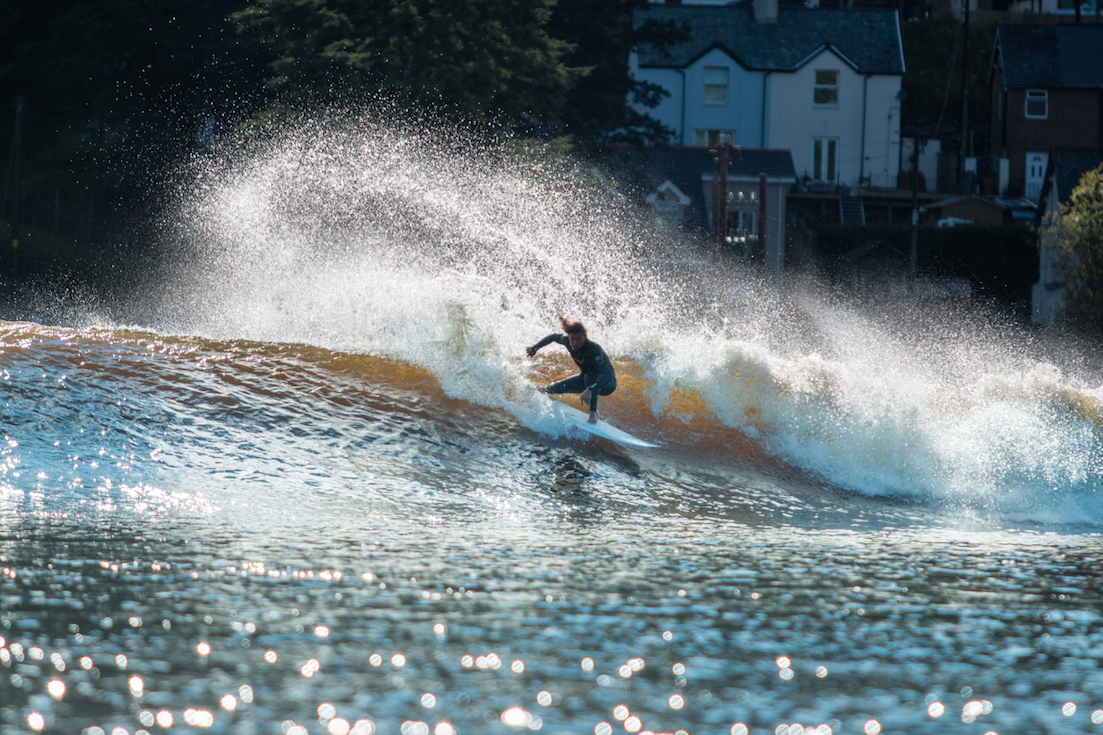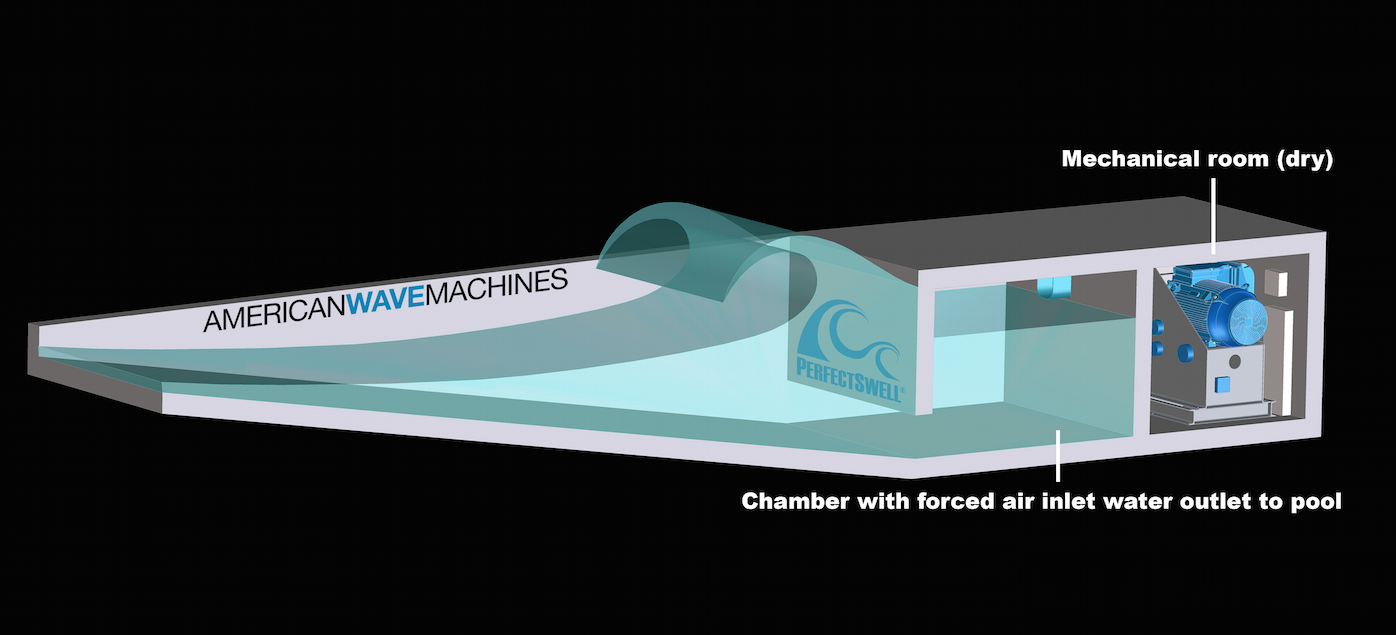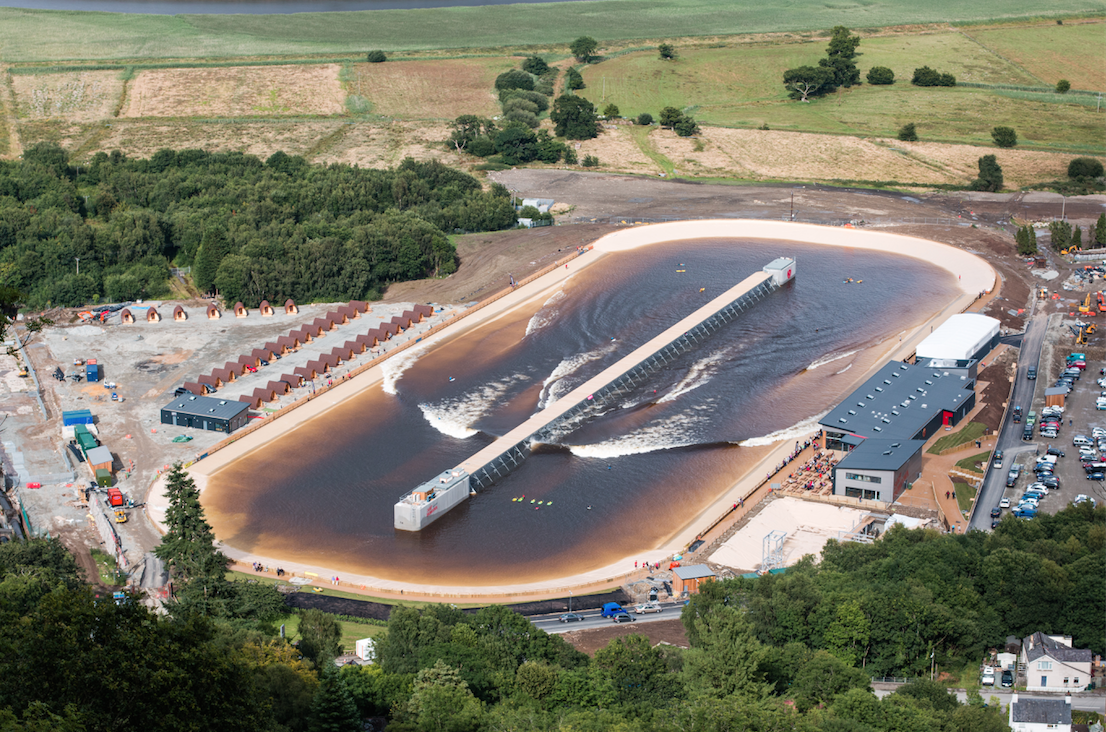This year could see the opening of the first inland park exclusively for surfboarding in North America. NLand Surf Park is developing such a park on 159 acres near the airport in Austin, Texas, three hours from any coastline.
It will feature a 1,082-foot-long, 492-foot-wide lagoon, in which a hydrodynamic blade, or wave foil, will move underwater from one end to the other, creating waves up to six feet high and rides up to 35 seconds long, at a rate up to 300 waves per hour.
NLand’s Golden, Colo., address hints at who’s behind this effort: Doug Coors, of the brewing dynasty, an engineer and avid surfer. Coors told ThinkProgress that he’s been investigating wave technology for 15 years. Beyond that, Coors isn’t revealing much. No renderings or cost estimates had been released as of mid-December.
The history of surf parks, which dates back to the 1960s, is rife with false starts and flops. But Felip Verger, a spokesperson for Wavegarden, the Spain-based firm providing the wave foil technology, says NLand is “well under way,” under a site-development permit the city issued in June 2014.
The 10-year-old Wavegarden has 15 engineers and two architects on staff. It opened its first surf park, Surf Snowdonia, in northern Wales last August. That park’s 985-foot-long, 360-foot-wide lagoon accommodates up to 36 surfers simultaneously. News reports peg Surf Snowdonia’s cost at between £12million and £14 million, with financial support from the Welsh government.
 Photo: Wavegarden
Photo: Wavegarden
The publicity around Wavegarden’s projects has raised questions about its technology, especially after mechanical problems forced Surf Snowdonia to close weeks before its season was supposed to end.
Greg Webber, Founder of Webber Wave Pools in Australia, claims that in order to increase the waves per hour it can produce, Wavegarden’s technology sacrifices ocean-like authenticity. Webber’s own technology—which has yet to get beyond renderings—involves a kind of underwater monorail driving computer-operated hydraulic hulls that alter the waves’ size, shape, draft, and angle.
Verger insists that Surf Snowdonia will reopen in March. Wavegarden is determined to open surf parks on five continents within the next five years. It has an exclusive agreement in Australia with Perth-based Wave Park Group, whose Founder, Andrew Ross, tells BD+C that he wants to have 10 surf parks operating by 2025. Ross estimates a 350x130-meter surf park would take a year to build and cost $14.5 million to $18.1 million, plus land costs.
Surfing is one of several sports that have been shortlisted for possible inclusion in the 2020 Olympic Games in Tokyo. And Wavegarden is one of several wave-making technologies vying for the International Olympic Committee’s attention.
A leader in this field is Murphys Waves, a 15-year-old manufacturer based in Glasgow, Scotland, that has installed 14 surf parks, including Disney World’s Typhoon Lagoon. Its hydraulic Point Break Surf System can generate surfing waves as high as 11 feet, and offers computerized control of the wave’s right, left, and point breaks. Jim Stuart, its Sales Director, says Murphys Waves is working with a client in Malaysia on an Olympic Surf Competition System, which he wouldn’t talk about except to say it will produce waves up to 13 feet high.
American Wave Machines, Solana Beach, Calif., uses pneumatic air pressure to create waves in smaller pools that are scalable for different indoor and outdoor spaces, and are designed to maximize the number of rides per day. Founder Bruce McFarland says AWM’s technology will be deployed at the $3.7 billion American Dream entertainment complex being built in Secaucus, N.J.
 American Wave Machines uses air pressure and digital controls to produce wave swells.
American Wave Machines uses air pressure and digital controls to produce wave swells.
Related Stories
AEC Tech | Feb 20, 2024
AI for construction: What kind of tool can artificial intelligence become for AEC teams?
Avoiding the hype and gathering good data are half the battle toward making artificial intelligence tools useful for performing design, operational, and jobsite tasks.
AEC Innovators | Jun 15, 2023
Rogers-O'Brien Construction pilots wearables to reduce heat-related injuries on jobsites
Rogers-O'Brien Construction (RO) has launched a pilot program utilizing SafeGuard, a safety-as-a-service platform for real-time health and safety risk assessment. Non-invasive wearables connected to SafeGuard continuously monitor personnel to prevent heat exhaustion on jobsites, reducing the risk of related injuries. RO is the first general contractor to pilot this program.
Office Buildings | May 15, 2023
Sixteen-story office tower will use 40% less energy than an average NYC office building
This month marks the completion of a new 16-story office tower that is being promoted as New York City’s most sustainable office structure. That boast is backed by an innovative HVAC system that features geothermal wells, dedicated outdoor air system (DOAS) units, radiant heating and cooling, and a sophisticated control system to ensure that the elements work optimally together.
K-12 Schools | May 12, 2023
In Virginia, a new high school building helps reimagine the experience for 1,600 students
In Virginia, the City of Alexandria recently celebrated the topping out of a new building for Alexandria City High School. When complete in 2025, the high-performance structure will accommodate 1,600 students.
Hotel Facilities | May 9, 2023
A new camping destination near Utah’s Zion National Park offers a variety of all-season lodgings and amenities
Outdoor lodging brand AutoCamp has opened a new camping destination near Utah’s Zion National Park. A 16-acre property, AutoCamp Zion is located between the Virgin River and the desert of Southern Utah.
Concrete Technology | Apr 24, 2023
A housing complex outside Paris is touted as the world’s first fully recycled concrete building
Outside Paris, Holcim, a Swiss-based provider of innovative and sustainable building solutions, and Seqens, a social housing provider in France, are partnering to build Recygénie—a 220-unit housing complex, including 70 social housing units. Holcim is calling the project the world’s first fully recycled concrete building.
Design Innovation Report | Apr 19, 2023
Reinforced concrete walls and fins stiffen and shade the National Bank of Kuwait skyscraper
When the National Bank of Kuwait first conceived its new headquarters more than a decade ago, it wanted to make a statement about passive design with a soaring tower that could withstand the extreme heat of Kuwait City, the country’s desert capital.
Design Innovation Report | Apr 19, 2023
HDR uses artificial intelligence tools to help design a vital health clinic in India
Architects from HDR worked pro bono with iKure, a technology-centric healthcare provider, to build a healthcare clinic in rural India.
Urban Planning | Apr 12, 2023
Watch: Trends in urban design for 2023, with James Corner Field Operations
Isabel Castilla, a Principal Designer with the landscape architecture firm James Corner Field Operations, discusses recent changes in clients' priorities about urban design, with a focus on her firm's recent projects.
3D Printing | Apr 11, 2023
University of Michigan’s DART Laboratory unveils Shell Wall—a concrete wall that’s lightweight and freeform 3D printed
The University of Michigan’s DART Laboratory has unveiled a new product called Shell Wall—which the organization describes as the first lightweight, freeform 3D printed and structurally reinforced concrete wall. The innovative product leverages DART Laboratory’s research and development on the use of 3D-printing technology to build structures that require less concrete.

















